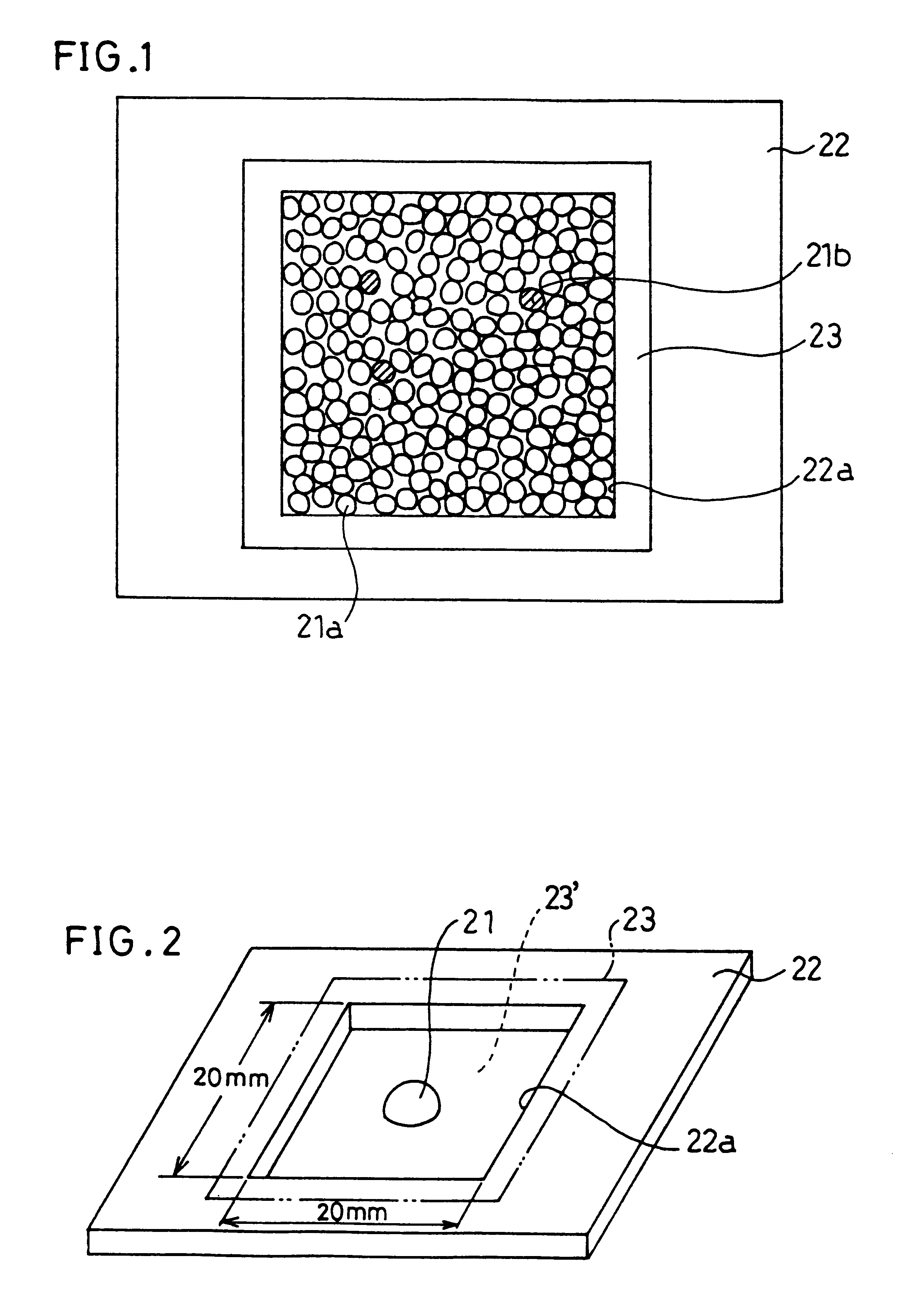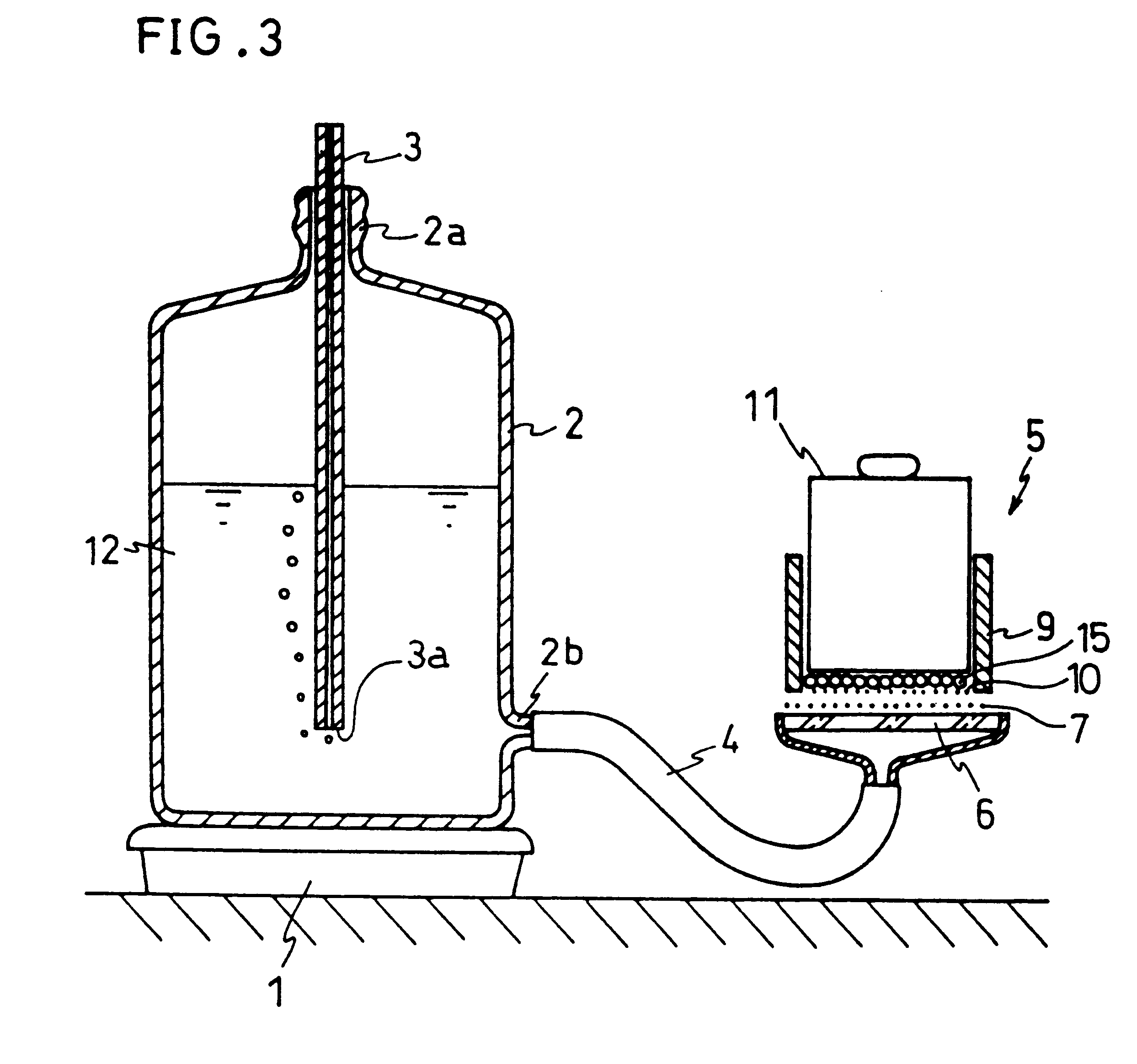Water-absorbent agent and method for manufacturing the same
a technology of water-absorbent resin and water-absorbent resin, which is applied in the direction of bandages, chemistry apparatus and processes, and other chemical processes, can solve the problems of lowering the diffusivity of aqueous liquid such as body fluids, the liquid permeability, the gel strength and the absorbing rate, and the water-absorbent resin made by the described methods has not reached a satisfactory level, etc., to achieve stable ph, improve safety
- Summary
- Abstract
- Description
- Claims
- Application Information
AI Technical Summary
Benefits of technology
Problems solved by technology
Method used
Image
Examples
example 1
A reaction liquid was prepared by mixing 720 grams of acrylic acid, 3.08 grams of N,N'-methylene-bis acrylamide (inner crosslinking agent), and 2718 grams of deionized water (solvent) in a reaction vessel which is a stainless-made twin arm type kneader with a lid and two sigma vanes equipped with a jacket having a volume of 10 liter. Then, while maintaining the temperature of the reaction liquid at 15.degree. C., nitrogen replacement was carried out in the reaction vessel. Then, while stirring the blade of the kneader, as a polymerization initiator, 21.6 grams of a 2,2'-azobis(2-amidinopropane) dihydrochloride aqueous solution (10 percent by weight), 18.0 grams (1 percent by weight) of L-ascorbic acid aqueous solution, and 20.6 grams (3.5 percent by weight) of hydrogen peroxide aqueous solution were added to the reaction solution so as to start polymerization. Polymerization was carried out in such a manner that with the start of polymerization, the blade was stopped, and the temper...
example 2
An unneutralized hydrogel polymer (A) was obtained by the same reactions and processes as in Example 1. The hydrogel polymer (A) was further chopped into small particles at 50.degree. C., and 750 grams of sodium hydroxide aqueous solution (40 percent by weight) was dropped for 40 minutes and mixed. Thereafter, the blade was stopped, and after maintaining the mixed solution for 80 minutes at 50.degree. C., 1 percent by weight of phenolphthalein-ethanol solution was added to resulting polymer. However, no red purple color of phenol phthalein was observed. Then, 400 grams of deionized water (aqueous liquid) was added and mixed with the polymer uniformly, and the mixed solution was rested for 5 days at room temperature to finish the neutralization (neutralization ratio of 75 mole per cent).
Then, the polymer after neutralization (referred to as polymer (A.sub.2) hereinafter) was dried by a hot air of 50.degree. C. for 16 hours, and the dried product was pulverized by a shaking mill for a...
example 3
An unneutralized hydrogel polymer (A) was obtained by the same reactions and processes as in Example 1. The hydrogel polymer (A) was further chopped into small particles at 50.degree. C., and 750 grams of sodium hydroxide aqueous solution (40 percent by weight) was dropped for 40 minutes and mixed. Thereafter, the blade was stopped, and after maintaining the mixed solution for 80 minutes at 50.degree. C., 1 percent by weight of phenolphthalein-ethanol solution was added to resulting polymer. However, no red purple color of phenolphthalein was observed. Then, 400 grams of deionized water (aqueous liquid) was added and mixed with the polymer uniformly, and the mixed solution was rested for 12 hours at room temperature to finish the neutralization.
Then, the polymer after neutralization (referred to as polymer (A.sub.3) hereinafter) was dried by a hot air of 50.degree. C. for 16 hours, and the dried product was pulverized by a shaking mill and was classified so as to obtain polymer part...
PUM
| Property | Measurement | Unit |
|---|---|---|
| diameter | aaaaa | aaaaa |
| temperature | aaaaa | aaaaa |
| temperature | aaaaa | aaaaa |
Abstract
Description
Claims
Application Information
 Login to View More
Login to View More - R&D
- Intellectual Property
- Life Sciences
- Materials
- Tech Scout
- Unparalleled Data Quality
- Higher Quality Content
- 60% Fewer Hallucinations
Browse by: Latest US Patents, China's latest patents, Technical Efficacy Thesaurus, Application Domain, Technology Topic, Popular Technical Reports.
© 2025 PatSnap. All rights reserved.Legal|Privacy policy|Modern Slavery Act Transparency Statement|Sitemap|About US| Contact US: help@patsnap.com



